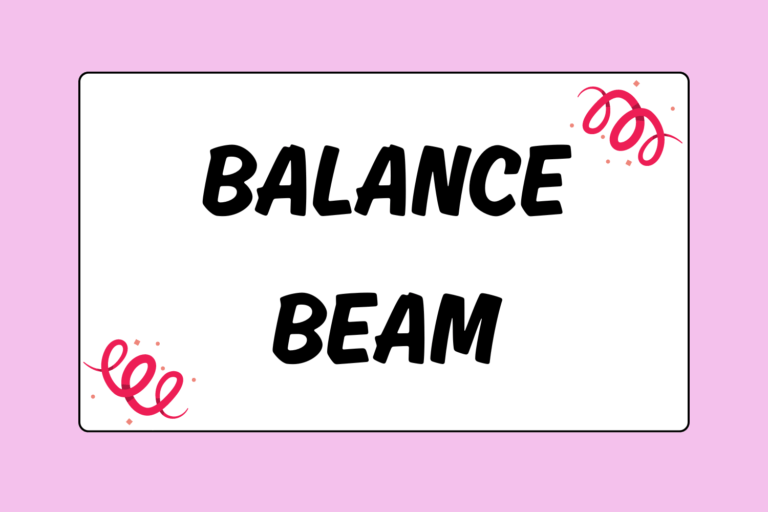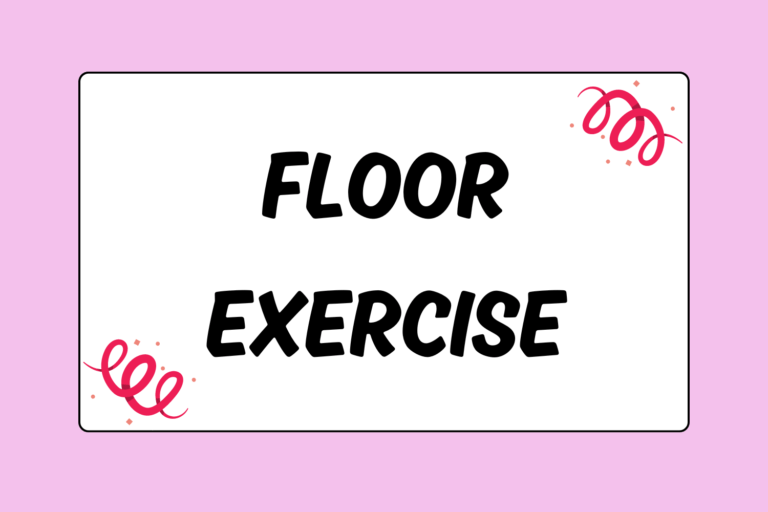Whether you’re participating in gymnastics just for fun, or you have competitive goals, strength training plays an important role in your workout. It’ll help you learn new skills while decreasing the potential for injury. Keep in mind that your coach will know the proper exercises and repetitions for your body type and skill level. The following sections provide general exercises that develop the muscles necessary for gymnastics success.
Abs of Steel
Core strength is crucial on every gymnastics apparatus. It’s especially critical on uneven bars, high bar, parallel bars, and pommel horse, where the legs need to be held up for much of the exercise. Below are two exercises that you can easily practice outside of the gym:
Hollow Body Hold
The higher you advance, the more your coach will emphasize the hollow position: Back rounded and pelvis tucked under, with the arms extended next to the ears and the toes slightly in front of the body. The hollow body hold helps with strengthening your core, which you’ll need especially for the bar events and floor tumbling.
The following instructions break down the proper form, technique, and procedure:
- Sit on the floor in a ball, knees tucked to your chest.
- Lift your arms so that they cover your ears.
- At the same time, extend your legs until your feet are five to six inches off of the ground.
- Lean back slowly, pressing the small of your back into the floor.
Your lower back should be against the floor at all times, with your shoulders above the ground.
V-ups
To begin this exercise, lie flat on the floor with your arms and legs extended, and then proceed as follows:
- Simultaneously lift your arms and legs, touching your toes over the midsection of your body to form a “v.”
- At the height of the v-up, you should be balanced on your lower back.
- Extend back to the floor, and repeat.
Test yourself: Try to complete as many as can you in 30 seconds. As your core strength improves, you should be able to increase the number.
V-ups are also useful for training the hip flexors to snap your legs up quickly, which you’ll need for pike jumps, back flips, and all of the bar apparatuses. Make sure you maintain correct leg form and keep your legs straight through the v-up.
Back it Up
As you develop your core muscles, you’ll want to strengthen your lower back to ensure that both sides of your body are equally strong.
Arch-ups
Arch-ups are the exact opposite of hollow body. Lie on your stomach with your arms above your head and your legs straight. Lift your arms and legs so that your stomach is the only part of your body still on the floor. Lower to the ground and repeat.
Variations for arch-ups:
- Use a partner and an elevated surface: Keep your legs and hips on the surface (such as a mat or vault table) and drape your torso over the edge so that you’re folded in half. With a partner holding your legs, perform the arch-up.
- Alternate arms and legs: Lie on your stomach. Lift one leg and one arm at the same time (i.e. left arm and right leg), then lower to the ground and repeat with the other arm and leg.
- Isolate the legs: Hold onto a mat or other stable surface. Lift just your legs, making sure to keep the feet together.
Not only do arch-ups help strengthen your lower back, they’re also a way to practice heel drive, which you’ll need for vault and your front handsprings on floor.
Armed & Ready
In men’s gymnastics, four of the six events require tremendous arm strength. For women, the uneven bars demand the most arm strength.
Push-ups
Push-ups are the simplest way to work your triceps, shoulders, and pectorals. A good push-up requires a straight or hollow core, with the back flat and shoulders over your hands — the precise position that you’ll need for great casts on bars and swings on pommel horse.
Once you’re in this position, lower your body as one unit to the floor. Touch your chin to the ground, and then push back up.
If you feel like a push-up pro, try these variations:
- Diamond (index fingers and thumbs touching)
- Wide arm (hands placed beyond your shoulders)
- Handstand push-ups
Hot Tip: Straighten Out
When fatigued, it’s easy for the hips to sag in the push-up, producing a large arch. Or, in the other extreme, you push the hips into the air so that the push-up now looks like a V instead of a straight line. Your push-up may feel easier in these positions, but your gymnastics won’t benefit.
Wall Handstands
If you’re not yet comfortable in the handstand position, practicing against a wall is a great way to achieve the necessary balance and body position. If you already have a strong handstand, the challenge will be to hold the handstand for as long as possible without breaking form.
- Face to the wall: With your stomach on the wall, you should be able to press your hips and shoulders against the wall. Push down on the floor through the shoulders to prevent any sagging or arching.
- Back to the wall: Your lower back and shoulders should touch the wall. Once again, there should be no arch.
See if you can hold the handstand for 30 seconds without coming down or breaking form. If that’s too easy, try a minute.
A Leg Up on the Competition
Leg strength leads to explosive tumbling and vaulting. But it also helps in the balance and execution of dance and acrobatic skills on floor exercise and balance beam.
Calf Raises
Stand on a beam or mat with your heels hanging off of the edge. Quickly rise onto your toes as high as you can, extending all the way through the feet. Make sure your feet stay pressed together and remain straight. Slowly lower back down until your heels are off the edge again, and then repeat.
Candlestick to a Jump
To achieve a candlestick position, lie on your back and lift your toes and hips toward the ceiling. As you become more comfortable, you should be able to balance on your shoulders.
Roll down from the candlestick to your feet, and then immediately jump up. When you land, roll back into the candlestick and repeat.
All Worked Out
As you work on your strength in gymnastics, spend time on each muscle group rather than favoring one over the other. You’ll also need to balance your conditioning regimen with stretching and flexibility exercises. By combining strength and flexibility, you’ll be ready to learn new skills.





